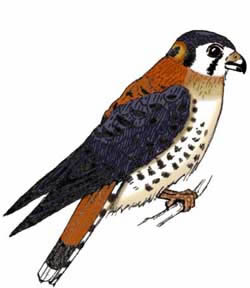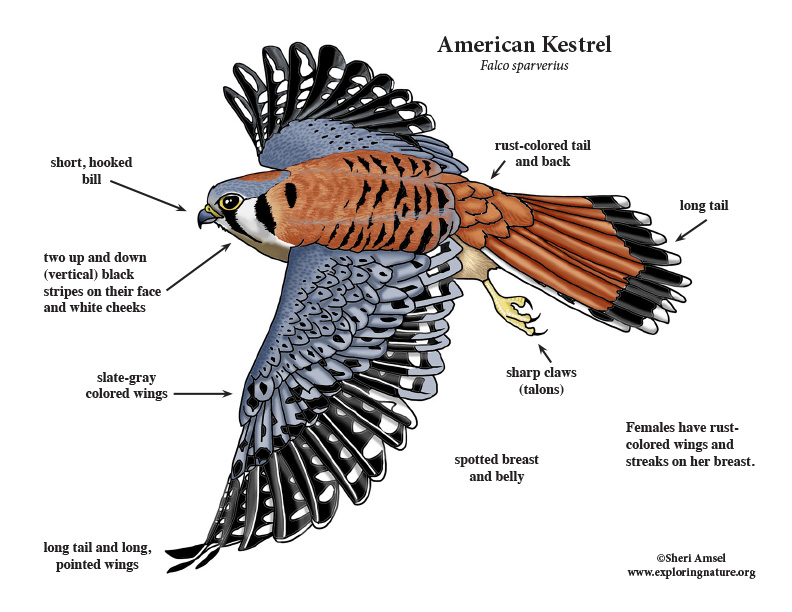

They can be found throughout North and South America.
They live in almost any habitat that has open areas for hunting and tall places for it to perch.
They are the smallest falcon in North America, only reaching about 12 inches tall. They have slate-gray colored wings and a spotted breast and belly, a rust-colored tail and back and two up and down (vertical) black stripes on their face. They have a short, hooked bill, white cheeks, a long tail and long, pointed wings. Females have rust-colored wings and streaks on her breast. It was once called a sparrow hawk.
They live alone except during mating season. They like to perch up on trees and telephone poles to watch for prey. They can hover over their prey and then drop down to kill it.
They eat small mammals, small birds, insects, reptiles and amphibians.
They are the only North American falcon that nests in tree holes or nest boxes. The female lays 3 to 7 eggs and does most of the warming of the eggs until they hatch (incubation). The eggs hatch in about 1 month.
Kingdom: Animalia
Phylum: Chordata
Subphylum: Vetebrata
Class: Aves
Order: Falconiformes
Family: Falconidae
Genus: Falco
Species: F. sparverius
When you research information you must cite the reference. Citing for websites is different from citing from books, magazines and periodicals. The style of citing shown here is from the MLA Style Citations (Modern Language Association).
When citing a WEBSITE the general format is as follows.
Author Last Name, First Name(s). "Title: Subtitle of Part of Web Page, if appropriate." Title: Subtitle: Section of Page if appropriate. Sponsoring/Publishing Agency, If Given. Additional significant descriptive information. Date of Electronic Publication or other Date, such as Last Updated. Day Month Year of access < URL >.
Amsel, Sheri. "Kestrel (American)" Exploring Nature Educational Resource ©2005-2024. December 14, 2024
< http://www.exploringnature.org/db/view/169 >

